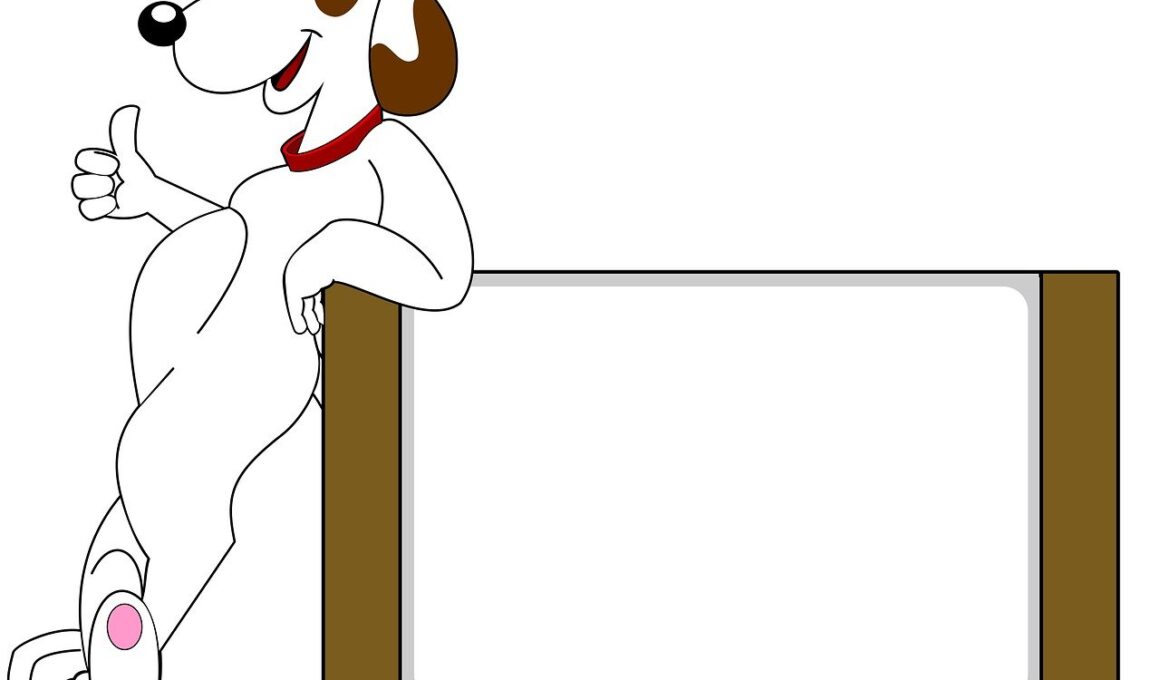Using Positive Reinforcement to Teach the Crawl Command to Your Dog
Teaching the crawl command to your dog is a rewarding experience that enhances communication and strengthens the bond between you and your furry friend. This command is not only a fun trick but also an excellent way to stimulate your dog’s mind and provide them with physical activity. To begin with, it’s crucial to ensure a comfortable environment where your dog feels secure and willing to learn. Start by having some treats handy, as positive reinforcement is essential in training. Positive reinforcement works by rewarding your dog’s good behavior, making them repeat it more often. When starting the crawl command, encourage your dog to lie down first. Once they are lying down, you can gently guide them forward. Use treats to keep their attention and motivate them to move. Display enthusiasm and patience; this process may take some time. Ensure that you’re consistent with your cues to avoid confusion. Use the same command and gestures every time you practice. With practice and positive reinforcement, your dog will soon master the crawl command and show off their new skill with pride.
As your dog begins to grasp the crawl command, consistency is vital. It’s recommended to practice the command multiple times a day, but keep the sessions short and engaging to avoid overwhelming your pet. Young puppies may have shorter attention spans, so aim for approximately 5 to 10 minutes of training at a time. After successfully getting them to crawl a few paces, offer plenty of praise and treats. Gradually increase the distance as your pet becomes more comfortable with the action. You may also find it helpful to create a designated training area; this could be a quiet corner in your home or even outside on the grass. Remove any distractions that could inhibit their focus. Experiment with using an enticing toy in the vicinity if it helps capture their interest. Additionally, be aware of your dog’s specific personality type; some dogs are quick learners, while others may need a little extra encouragement. Incorporate positive vibes and fun into each session, as this will make the training feel like a game rather than a chore. This approach will reinforce your dog’s eagerness to participate.
Steps to Effectively Train the Crawl Command
To effectively train your dog to crawl, follow these simple steps to enhance your sessions. First, begin with your dog in a lying-down position. Next, use a treat or your dog’s favorite toy to lure them forward. Hold the treat close to the ground in front of your dog’s nose to encourage movement. As their head follows the treat, gently encourage their body to slide forward. Use a consistent verbal command such as “crawl” or a hand signal to associate the action with the desired behavior. Repeat this process several times, celebrating small progress to build their confidence. As your dog starts to crawl, shorten the distance of the treat’s movement to encourage further crawling. Over time, reduce the need for treats as your dog learns the desired action. Use praise, such as “good boy” or “good girl,” to positively reinforce their progress. Be patient, as every dog learns at their own pace. Continue the training sessions daily and remember to keep a relaxed demeanor. This positive environment will foster a supportive learning atmosphere, encouraging success.
If your dog struggles with the crawl command, revisiting the basics is a smart approach. Sometimes, it may be necessary to break down the command further. Consider utilizing a hands-on method where you gently guide your dog’s body along the ground. There’s no shame in personalizing your training approach; find what resonates with your dog’s personality. Consult a professional dog trainer if you’re facing persistent challenges; they can provide tailored tips to help you. Furthermore, ensure you consider your dog’s age and physical capabilities, especially if they are older or have mobility issues. Utilize positive reinforcement techniques more heavily for dogs that require encouragement. It’s exciting when dogs start to associate the crawl command with fun, which makes the entire experience rewarding. Tracking your dog’s progress is also helpful; maintaining a training log will allow you to recognize improvements over time. Set miniature milestones to celebrate during training, which will boost motivation for both you and your companion. Always finish on a positive note, regardless of difficulties faced during sessions. This ensures your dog looks forward to future training!
Common Mistakes to Avoid When Training
While teaching your dog the crawl command can be enjoyable, there are several common mistakes to avoid. First and foremost is the mistake of being inconsistent with cues and rewards. Using different commands or tones may confuse your dog, which can lead to frustration for both you and your pet. Another frequent error is pushing your dog too hard, too fast. Remember, patience is key to successfully training any command. Allow your dog to progress at their own pace without undue pressure. Some owners inadvertently forget to reward their pets immediately after performing the desired action. Providing the reward too late can lead to the dog not correlating the action with the reward, diminishing motivation. Also, avoid using harsh tones or corrections, as this can create fear or anxiety. It’s essential to focus on fostering a positive and safe environment during training to ensure success. If your dog shows signs of stress or disinterest, it’s best to take a break. The goal is to strengthen your bond and create an atmosphere where your dog enjoys learning and engaging with you.
Beyond training, it’s beneficial to incorporate the crawl command into daily activities to reinforce learning. Integrating the command during playtime or exercise routines will help solidify the skill while enhancing your dog’s overall obedience. Consider using the crawl command as a fun way to transition between activities, such as moving from playtime to grooming. This approach makes the command relevant, further strengthening their understanding. Additionally, you might incorporate object retrieval games that invite your dog to crawl towards an item. Playing these engaging games fosters an enjoyable learning process, allowing your dog to remain active physically and mentally. Celebrate the successful use of the crawl command outside of formal training sessions. For example, ask your dog to crawl as you show off their skills to friends or family. This not only enriches their socialization but also reinforces their learning. Moreover, always remain attentive to your dog’s mood, adapting training methods as necessary. Recognizing when they need a break or a change in activity can make a substantial difference in how they perceive training. Aim for a balance that maintains interest while developing skills.
Encouraging Advanced Skills
Once your dog has mastered the crawl command, why not encourage them to advance further? Taking skills to the next level allows you and your dog to enjoy not just learning but also practicing engaging tricks. A great way to galvanize their skill set is to incorporate props or additional commands. For instance, you could teach your dog to crawl under a series of chairs or through a small tunnel. By employing fun and challenging activities, you provide mental stimulation and prevent boredom. It’s also a great opportunity to introduce distractions gradually; this can help in maintaining focus during training sessions. Creative variations serve not only training purposes but also bond-building exercises. Always remember to reward your dog from time to time, promoting their efforts. As you challenge your pup progressively, maintain a steady reinforcement schedule; this supports their desire to succeed. Be sure to participate in positive discussions with fellow dog owners to gain new insights and tips. Your dog’s improvement can also inspire others to dive into positive reinforcement methods, encouraging a community of pet owners who aim for excellence in training.
Ultimately, every command learned together can greatly enhance the relationship forged between you and your dog. The crawl command serves as just one example of how training can lead to a deeper connection filled with mutual respect and understanding. As you embark on this training journey, remember to celebrate not just the successes but the challenges as well. Engaging with your dog’s learning process strengthens communication and creates lifelong memories. Training creates a fulfilling environment where your dog can thrive and learn various skills throughout its life. It’s essential to frequently revisit commands, as regular practice helps reinforce skills and keeps them sharp. Besides, the joy of seeing your furry companion mastering new tricks brings immeasurable satisfaction, reinforcing the bond of affection between you two. Building a solid foundation of learning and positive memories creates a platform for future training adventures. Share your experiences along this journey with friends and family, as they can benefit from your knowledge. Most importantly, ensure that training remains a playful activity; enjoying the time invested together will yield beautiful moments you will both cherish for years.


